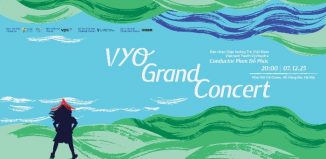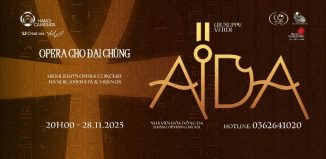KVT – An Alpine Wonderland with the VNSO in Grand Form in a Grand New Venue

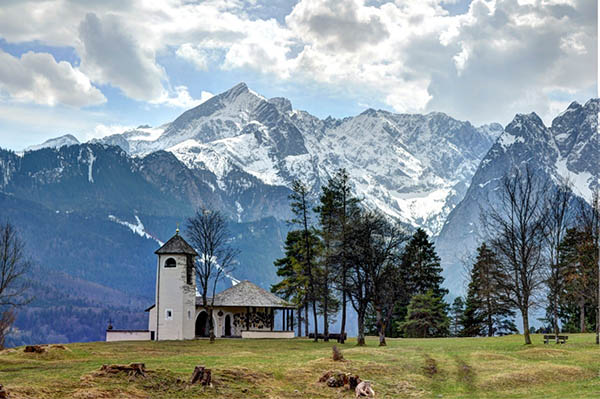
KVT and precious, pre Christmas musical jewels-Vietnamese, Czech, Japanese-at a musical night to remember

The Vietnam National Symphony Orchestra has never failed to help end my music appreciation year on a positive note and this year they surpassed themselves (and had I been alpine dwelling German, Austrian or Czech and feeling a bit homesick, I’d have had tears streaming down my face at the beauty of it all)
Perhaps it was the soopa doopa new venue they played in, the sparkling, Autumn toned Grand Concert Hall at the National Academy of Music that made the music sparkle so!…and wouldn’t you know it I left my camera apparatus at home…otherwise you’d have had an opinion piece liberally sprinkled with images of this excellent venue
For years serious music makers from solo performers to symphony orchestras have had to put up with the very gorgeous but not terribly acoustically sound Opera House. Sometimes the acoustically excellent auditorium at L’Espace is utilized for chamber music or recitals, but the symphony players must have cheered long and loud when they saw the newly minted Grand Concert Hall
It has a rake to die for with no obstructions to viewers and an interior that is modern, smart and visually appealing…wood paneling, sound baffles, comfortable seats with enough leg room for Dutch or Nordic giants to stretch their legs to the max.
A photo essay on this lovely interior is on my wish list.
The exterior is grandly, functional and the lobbies and foyers are aglow with fountaining chandeliers while marble staircases sweep in grand curves…. But all this is not a patch on the very modern interior which is crying out for a contemporary architect to design an iconic shell around it….alas for opportunities lost!
As the venue is out of the way, in the general vicinity of the Pullman Hotel, it is debatable as to whether it will become a primary performance hall for the Vietnam National Symphony Orchestra. A discerning music lover can only hope that it will!
Anyway the modern/grandiloquent architectural mix was grand enough reason for the VNSO to premiere its version of Richard Strauss’ very grandiloquent tone poem, ALPINE SYMPHONY
Strauss for this symphony went all Mahlerish and composed for a very large orchestra of over 100 musicians that include two flutes and two piccolos, two oboes plus English horn and heckelphone, four clarinets, three bassoons and contrabassoon, four horns and four tenor tubas, four trumpets, four trombones, two bass tubas, timpani , wind machine, thunder machine, glockenspiel, cymbals, bass drum, snare drum, triangle, cowbells, tam-tam, organ, celesta, and strings; also an offstage ensemble of twelve horns, two trumpets, and two trombones, which can at least partly be drawn from the onstage forces; plus further optional reinforcements of two flutes, two oboes, E-flat and C clarinets, and two harps
It was fabulous to see the musicians spread our comfortably- and not crammed in sardine wise a la Opera House mode-on the expansive platform.
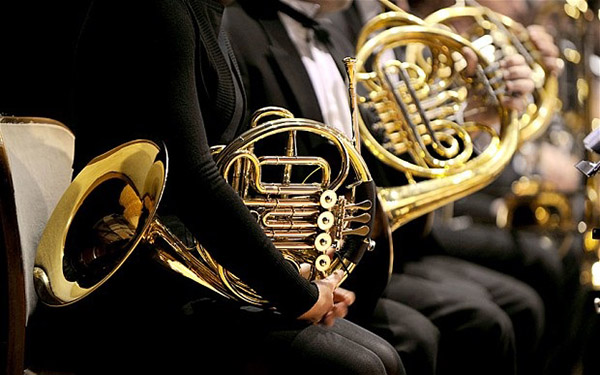
But let’s start at the beginning with the second jewel of the night (the first jewel being ones first, second and third ooh aah gasps on entering the concert hall)
This glimmering piece was Strauss’ second Horn Concerto, composed in 1943 in Vienna where Strauss had moved to from his home in the Bavarian Alps to get some necessary official protection against the Nazi regime who were closing in on his Jewish daughter in law…a large proportion of whose family were exterminated at Theresienstadt concentration camp. Vienna didn’t provide an easy life because it was beginning to be bombarded by allied aircraft
Strauss in his elderly years had withdrawn from the savage drama of his earlier opera compositions of Salome or Elektra which had made him rich and famous, and, at 78, six years before his death, he gave the world a sublime work in this Horn Concerto
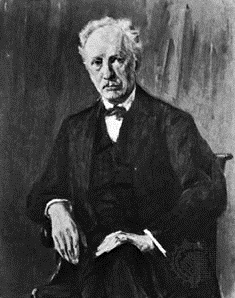
A much reduced orchestra than the one outlined above played like finely cut facets on the jewel as they accompanied Czech soloist Premysl Vojta. Voljta is one of those tall Europeans who would appreciate the new, roomy seats we sat in to hear him play.
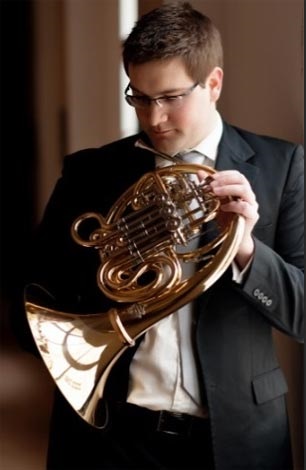
He’s a soloist with the Academy of St Martin’s in the Fields so that makes him pretty much a world renowned virtuoso and in 2010 was awarded 1st prize and audience prize in the International ARD competition where he showcased the Horn Concerto
[youtube width=”600″ height=”337″]https://www.youtube.com/watch?v=hOAECZpwa08[/youtube]
It’s not often you get to hear concertos written for brass instruments and for those like a friend who has a strong sentiment for a good horn section in a good orchestra, this concerto was heaven sent
The beginning is enough to make you sigh with happiness as the musician solos and then rhapsodizes softly with the strings inveigling us with spicks and specks of tunes that are fully revealed as the concerto progresses on a route that starts out as stately but ends up sprightly and with more than a hint of youthful spritzig.
Strauss was particularly proud of the last movement that makes a truism of the words of a critic I recently read….if Mahler uses music to transcend the pain of existence, Strauss uses music to make existence bearable….which in 1943 when Germany was beginning to crumble around its brittle edges, making existence bearable was necessary for a populace that was becoming more and more bewildered and disenchanted about patriotic propaganda and that was more and more a target of aerial bombing raids
Strauss’ late music, as beautifully played by our Czech virtuoso on the weekend, is the type that many classical music lovers still find they need for balm as the modern world whirls into its cataclysmic hurdy gurdies. It’s music, that includes the composers Oboe Concerto, and his mournful Metamorphosen

After an interval spent exploring all levels of the new music hall with more oohs and ahhs and a couple of gasps (the management really needs to heed the Government’s laws about smoking in public spaces, particularly grand foyers) it was onto an adventure into the Bavarian Alps around the town of Garmisch where Strauss bought a villa to live in, in 1908, with views over the snow tipped mountains. Where, some biographers say, he later attempted to insulate himself and his family from the nationalistic fervor of 1920ies and 30ies Germany………For us ardent adventurers it’s near where he got caught in a storm while hiking in 1879 when he was 15….as this letter to a friend describes
Recently we made a great hiking party to the top of the Heimgarten, on which day we walked for twelve hours. At two in the morning we rode on a handcart to the village, which lies at the foot of the mountain. Then we climbed by the light of lanterns in pitch-dark night and arrived at the peak after a five-hour march. There one has a splendid view [of lakes, mountains, glaciers, and so on]. Then we hiked down the other side to Lake Walchensee, but we took a wrong trail and had to climb around in the midday heat for three hours with no path. . . . Lake Walchensee is a beautiful lake, but makes a melancholy impression since it is enclosed by forests and high mountains. . . . [On the way from there to Lake Kochelsee] a terrible thunderstorm overtook us, which uprooted trees and threw stones in our faces.
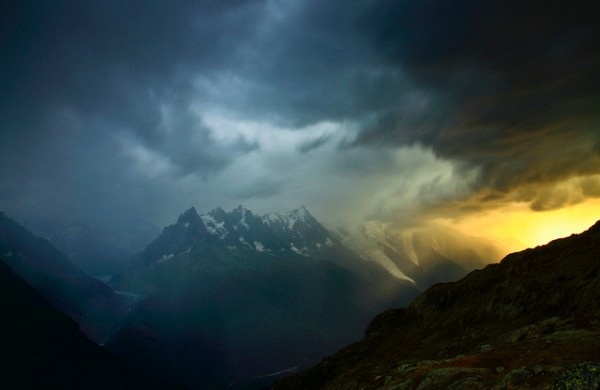
We hardly had time to find a dry spot before the storm broke. Lake Kochelsee, a very romantic and beautiful lake, made huge waves so that it was impossible to even think about crossing it. After the storm had passed we had to settle for walking all the way around the lake, whether we wanted to or not. On the way the rain came again and that is how we arrived in Schlehdorf, after a breakneck march (we did not rest for a single moment)—tired, soaked to the skin—and spent the night; then the next morning we rode as calm as could be in the hay wagon to Murnau. The hike was interesting, unusual, and original in the highest degree.”
The next day he tried to turn the experience into a musical adventure on the piano and it kept recurring in his imagination until 1915 when he made it into the tone poem we know today.
Initially he wanted to compose the piece around Nietzsche’s philosophical essay Der Antichrist because as he wrote in his diary in 1911 “It is clear to me that the German nation will achieve new creative energy only by liberating itself from Christianity. . . . I shall call my alpine symphony Der Antichrist, since it represents: moral purification through one’s own strength, liberation through work, worship of eternal, magnificent nature.”
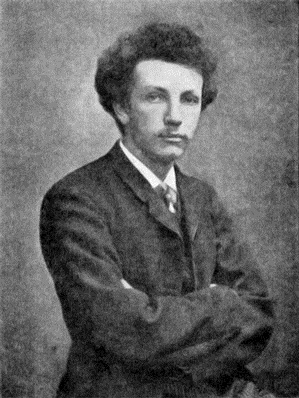
But the antichrist sentiment was trammeled underfoot by the Kaisers’ martial aspirations that demanded that God was definitely siding with the German’s, and the work became a painterly tone poem in the canon inspired by Liszt. It basically runs from pre-dawn of a new day through to nightfall. In twenty two interlocking sections the listener goes up the mountain and down again. He comes across natural features -forests, streams, meadows etc, as well as a hunting party, some dangerous, heart stopping moments in a vicious storm until there’s a wowing view from the top of the peak, a dusk that makes the spiritual almost real and a return home in the star strewn darkness
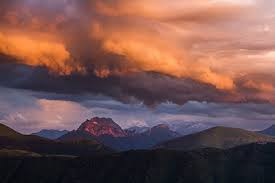
It was lucky that Strauss composed the piece when money and excesses were still around for huge orchestras and new techniques because he must have known he was composing for futility in his lifetime and that the world after the war would be a leaner, less extravagant place in which to mount such grand musical extravaganzas that needed up to 130 musicians on and off stage ….though in today’s Las Vegas moded word view, producers hardly blink an eye at far less worthy but more glitzy banalities are asked for.
Had Strauss survived another 60 years and heard revivals of his symphony and its audience reception he’d have been gob smacked….listen to this version from the BBC Proms in 2012
[youtube width=”600″ height=”337″]https://www.youtube.com/watch?v=eQa9mW8ygAE[/youtube]
And how did our own maestro Ong Honna manage with an extended orchestra of musicians from other ensembles, the Acadamy of Music, and oboists and harpists and an organist seconded from Japan?…
.MAGNIFICENTLY…………..It was a night to remember!….and one that we might not get again for a few years due to the expense of orchestra size
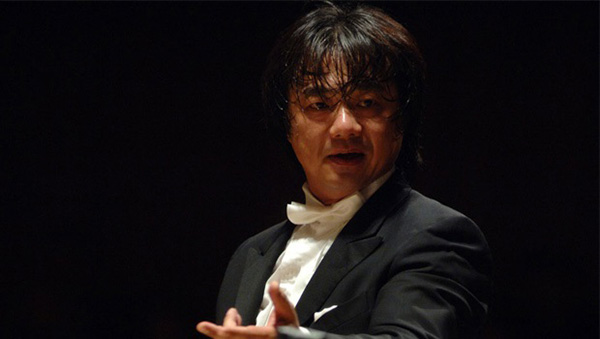
But what an exhausting 50 plus minutes it must have been for them!
All sections of the augmented orchestra were in top form and they knew it and from the time when the sun slowly and musically and metaphorically rose above our heads in notes and trills of crystal until it set again in reverse till the concert hall was stilled with lengthening dusk, it was a sustained and riveting effort (both aurally and visually) and to single out individual players would be a travesty because it was such a great combined effort.
It’s an extended roller coaster ride that slowly reaches dramatic heights, plunges over precipices, brakes to heart wrenching stops, meanders through peaceful dips and dales. Then it’s off again. Slowly up slopes that seem to be taking you to a spiritual realms and eventually into fear ridden places where you close your eyes and feel like screaming as the wind whips at you and an enormous crashing of thunder pounds your ear drums until it all finally slows down and draws to a lingering, almost wistful halt and you get off the ride totally invigorated but wishing you could get back on immediately for a second installment of the adventure.
OK,OK so I’ve over reached my quota of word image strangulation for the month but as it’s nearly Christmas I gave myself a gift of 50 extra adjectival phrases which this shimmering performance by the VNSO totally needed.
Congratulations Conductor Honna and your musicians for the best musical Christmas gift a person could wish for…..You are all magnificent and I hope deserved Christmas bonuses are underneath your Christmas Trees or in Santa’s sack.
And now for a demo of an aeliophone, the instrument that shrieks and whistles through the storm
[youtube width=”600″ height=”337″]https://www.youtube.com/watch?v=pmYoAmFcD3o [/youtube]
| Kiem Van Tim is a keen observer of life in general and the Hanoi cultural scene in particular and offers some of these observations to the Grapevine. KVT insists that these observations and opinion pieces are not critical reviews. Please see our Comment Guidelines / Moderation Policy and add your thoughts in the comment field below. |


